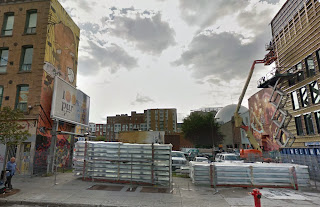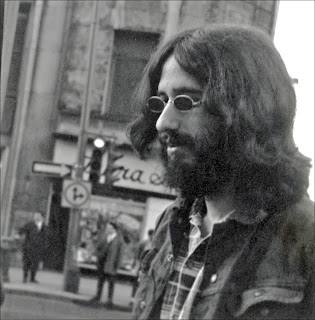Let's talk Lime.
Sometimes implanting your trademark sound on an era isn't something to be proud of.
One married Montreal duo did just that in the early 80s, churning out synth pop dance hits from the shadows of their living room and painting an age with a cringeworthy Canadian-content soundtrack with their whump-whump-whump-whump-wahhh-waah tunes that seeped out of Au Cotons and VW Rabbit windows often enough to make their music the unofficial anthem of the denizens of Mulletville.
![]() Denis Lepage and wife Denyse Lepage, aka, Denyse Savaria, started out as serious jazz musicians performing in Old Montreal clubs before realizing that the cash was in dance ditties.
Denis Lepage and wife Denyse Lepage, aka, Denyse Savaria, started out as serious jazz musicians performing in Old Montreal clubs before realizing that the cash was in dance ditties.
She sang background on a minor dance hit by Vogue and then the duo then put out a minor club tune under the name Kat Mandu and they eventually started pumping out Lime albums at a pace of about one per year until people stopped buying them.
The couple - who were married from about 1975 to 2000 and parented a daughter together - had an ear for a harmony but were less successful when singing alone. His voice pushes to do his best in a raspy, grating growl, while she does a helium-voice Minnie Mouse thing which one commentator likened to a chihuahua with a lit firecracker up her ass.
Radio, hungry for danceable Cancon gave them a load of playtime and radio stations beamed many hours of diamond-tipped needles digging into rotating copies of Babe We're Gonna Love Tonight.
Sometimes implanting your trademark sound on an era isn't something to be proud of.
One married Montreal duo did just that in the early 80s, churning out synth pop dance hits from the shadows of their living room and painting an age with a cringeworthy Canadian-content soundtrack with their whump-whump-whump-whump-wahhh-waah tunes that seeped out of Au Cotons and VW Rabbit windows often enough to make their music the unofficial anthem of the denizens of Mulletville.
 Denis Lepage and wife Denyse Lepage, aka, Denyse Savaria, started out as serious jazz musicians performing in Old Montreal clubs before realizing that the cash was in dance ditties.
Denis Lepage and wife Denyse Lepage, aka, Denyse Savaria, started out as serious jazz musicians performing in Old Montreal clubs before realizing that the cash was in dance ditties.She sang background on a minor dance hit by Vogue and then the duo then put out a minor club tune under the name Kat Mandu and they eventually started pumping out Lime albums at a pace of about one per year until people stopped buying them.
The couple - who were married from about 1975 to 2000 and parented a daughter together - had an ear for a harmony but were less successful when singing alone. His voice pushes to do his best in a raspy, grating growl, while she does a helium-voice Minnie Mouse thing which one commentator likened to a chihuahua with a lit firecracker up her ass.
Radio, hungry for danceable Cancon gave them a load of playtime and radio stations beamed many hours of diamond-tipped needles digging into rotating copies of Babe We're Gonna Love Tonight.
 |
| Hired imitators |
Perhaps because of their rough edges, or because they were 15-years-or-so older than many of the youth music consumers, the duo appeared none-too-assured of their telegenic potential, so they actually hired musicians to play them on stage in concert.
They never claimed outright that the actors doing their songs on stage live were the real studio musicians, so there's no Black Box or Milli Vanilli thing going on but it's not far off.
One of those younger blondes, Joy Dorris, is still doing it, or at least was until four years ago and isn't really young anymore so that's a bit awkward.
They have their detractors but their defenders as well.
For those of us who came of age as these tunes were ubiquitous, hearing them now evokes mixed feelings of nostalgia mixed with that same frequent irritation.




























 ((
((